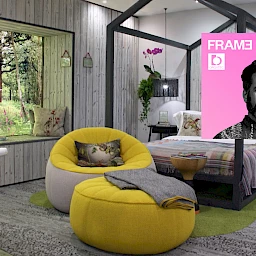Sustainability is gaining in importance as a factor in procurement decisions. In the “Jobfaktor Klima“ (climate as a job factor) study, which was conducted by the Königsteiner Gruppe in cooperation with the market research institute respondi in April 2020 and included a survey of 3,000 workers in Germany between the ages of 18 and 69, two thirds of the respondents said that sustainability and environmentally friendly operation is an important consideration in their choice of an employer. This means that a procurement policy oriented toward sustainability is also a tool for enhancing an employer’s profile. Today we’re talking with Volker Weßels about the procurement of office, school and facility furniture.
...
Mr Weßels, the European Office Furniture Federation (FEMB) established LEVEL, its own seal of sustainability, in 2017. Many seals of environmental friendliness had already existed before then. What makes LEVEL different?
LEVEL is based on the FEMB sustainability standard, which includes very many aspects of sustainability related to office and facility furniture. For this kind of furniture for professional use, there had previously been no comprehensive label that brings together the various aspects of environmental friendliness and social responsibility and assesses them from a neutral standpoint. We also thought it was important to take a pan-European approach. That includes, among other things, taking into account the EU Green Public Procurement (GPP) requirements, which form the basis of almost all major public procurement activities.

How does the certification work?
LEVEL is a third-party label — in other words, a ISO 14024 Type I label. By contrast to the vast majority of certificates in the market, this certification is not issued by the certification sponsor — in the case of LEVEL, that would be the FEMB. Instead, it is issued by independent certification bodies that must be authorised according to the ISO 17065 standard. We’re very proud of that. This is an official guarantee of neutrality, so to speak.
Manufacturers that wish to have their products tested by one of the accredited institutes can collect points as part of an audit. Depending on how many points are achieved, the manufacturer can receive Level 1, 2 or 3 certification, with the highest level being 3 at the moment. The manufacturer must also fulfil a number of preconditions. These are criteria that must be successfully fulfilled in any case.
You’ve referred to LEVEL as the most comprehensive certification for furniture. Nonetheless, it would probably be impossible to document every aspect of sustainable operation with reliable data. Where do you draw the line in LEVEL certification?
There are three boundaries that we must keep in mind for LEVEL certification. Firstly, this label is only available for office and facility furniture for indoor areas. That includes not only office furniture but also furniture for schools and other public spaces, for example. Home furnishings, outdoor furniture and furniture components cannot be certified, at least not at the moment. Secondly, we do not assess the economic efficiency of a product or a company, even though this too is an aspect of sustainability. Thirdly, we have set limits regarding the stage of the economic process from which we can realistically carry out an assessment. In the case of wood, there are clear international rules for forest management and logging, and the assessment takes these rules into account. In the case of the extraction of other raw materials such as metals, there have so far been no supply-chain audits at a widespread international level that reliably check for environmentally friendly and socially fair processing. That’s why the scope of audit of LEVEL begins with the delivery of preliminary products, as a rule — for example, with the suppliers of fittings, upholstery foams, leather and plastic components. The scope of audit ends after the finished product leaves the company, but the transportation to the trade or the customer is also included. This is called the gate-to-gate approach — from the factory’s entrance for preliminary products to the gate for deliveries. However, in special areas it’s possible to collect points from the circular economy category, for example, even if the corresponding activities take place before or after the “gate”, strictly speaking.
Can the LEVEL certification be part of a call for tenders? And how is it being received by the manufacturers?
Yes, LEVEL is also being included in public calls for tenders. Both the certification itself and individual performance areas from the FEMB list of standards can be included in calls for tenders.
And now let’s take a quick look at the activities of the EU in the area of sustainability. What can we expect to see there?
This field has been continuously expanding ever since the second edition of the European Green Deal in 2019 set up concrete requirements for the EU institutions. The Circular Economy Action Plan (CEAP), as well as the Sustainable Products Initiative (SPI) that it includes, were presented shortly thereafter. Both of them are also relevant for the development and production of office and facility furniture. In addition, the EU Ecolabel is currently being revised. However, specific criteria for furniture will only be available in two years at the earliest. Another EU project is the Product Environmental Footprint (PEF), which describes the environmental quality of a product in terms of an index number. In order to standardise this across all products, e.g. for furniture, we need rules of the game — which are known as Product Category Rules (PCR). And yes, a few days ago we saw the presentation of the first new draft of the regulation for the environmental design of sustainable products. It consists of a 123-page framework regulation plus appendices, which will deal with a large number of these topics. In the area of standards, we are currently working on a “Circularity Index” for furniture at the German and European levels, which will also have an impact on LEVEL in the medium term. As you can see, there’s a lot going on at the moment in this area, and many things will change in the future. However, in most areas LEVEL is already one step ahead.
Mr Weßels, we thank you for this talk.






